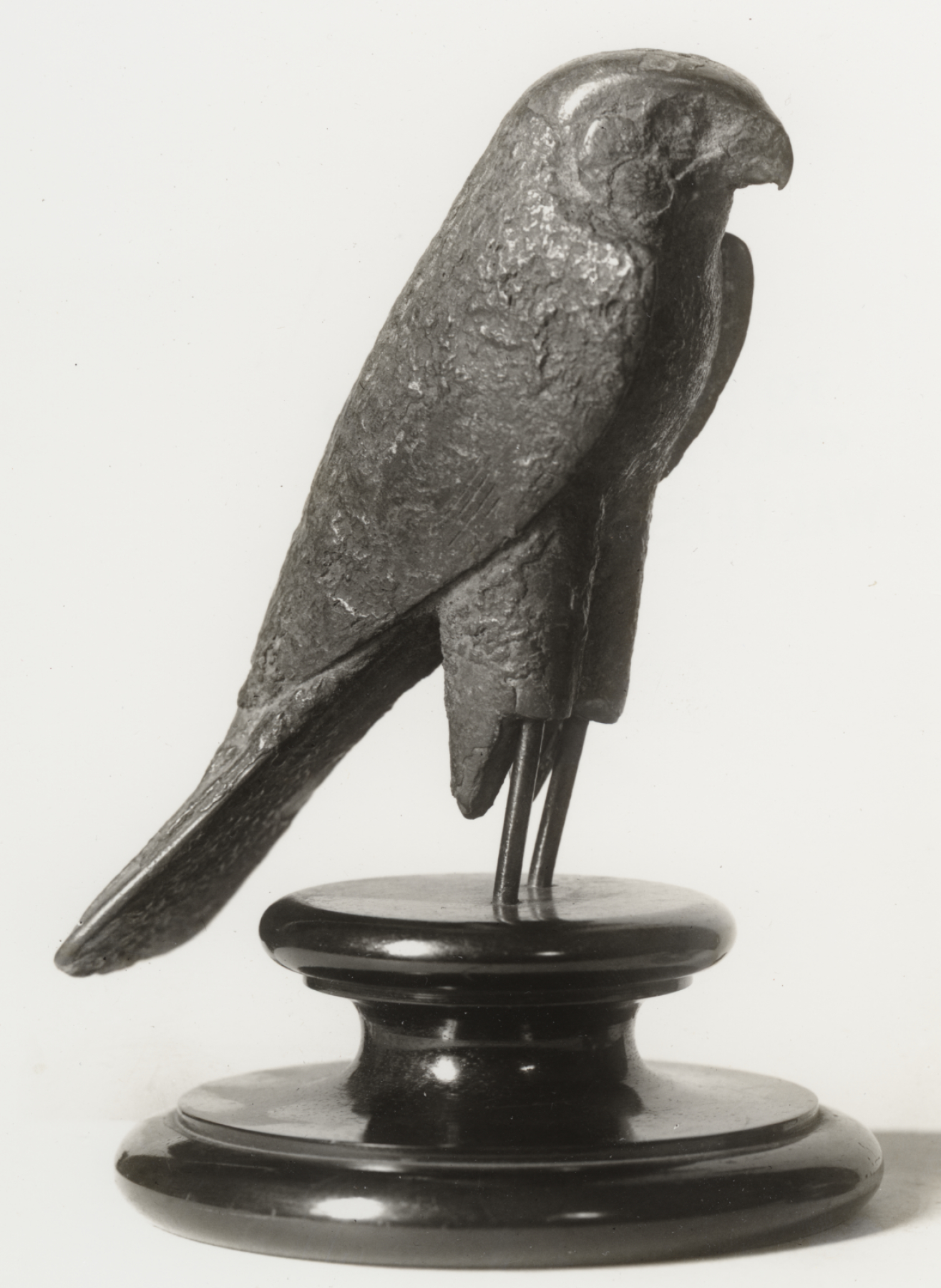Falcon Reliquary
(Ancient Egypt and Nubia )
The Egyptians buried mummified animals in zoomorphic (animal-shaped) coffins carved from wood or formed from clay, but they also inserted some of the preserved animals into hollow bronze reliquaries like this one. Placed in subterranean animal cemeteries, these figurines served not only as coffins but also as a kind of reliquary with a ritual function.
Provenance
Provenance (from the French provenir, 'to come from/forth') is the chronology of the ownership, custody, or location of a historical object. Learn more about provenance at the Walters.
Henry Walters, Baltimore [date and mode of acquisition unknown]; Walters Art Museum, 1931, by bequest.
Exhibitions
| 2008-2013 | Mummified. The Walters Art Museum, Baltimore. |
| 1984 | The Egyptian Mummy: Secrets and Science. Maryland Science Center, Baltimore. |
Conservation
| Date | Description | Narrative |
|---|---|---|
| 4/30/1957 | Treatment | cleaned |
| 7/1/1981 | Examination | examined for condition |
| 2/8/1984 | Loan Consideration | examined for loan |
| 3/9/1984 | Examination | examined for loan |
| 10/10/2008 | Treatment | cleaned; loss compensation; other |
Geographies
Egypt (Place of Origin)
Measurements
7 1/2 x 2 3/16 x 4 in. (19 x 5.5 x 10.2 cm)
Credit Line
Acquired by Henry Walters, by 1931
Location in Museum
Not on view
Accession Number
In libraries, galleries, museums, and archives, an accession number is a unique identifier assigned to each object in the collection.
In libraries, galleries, museums, and archives, an accession number is a unique identifier assigned to each object in the collection.
54.2120


